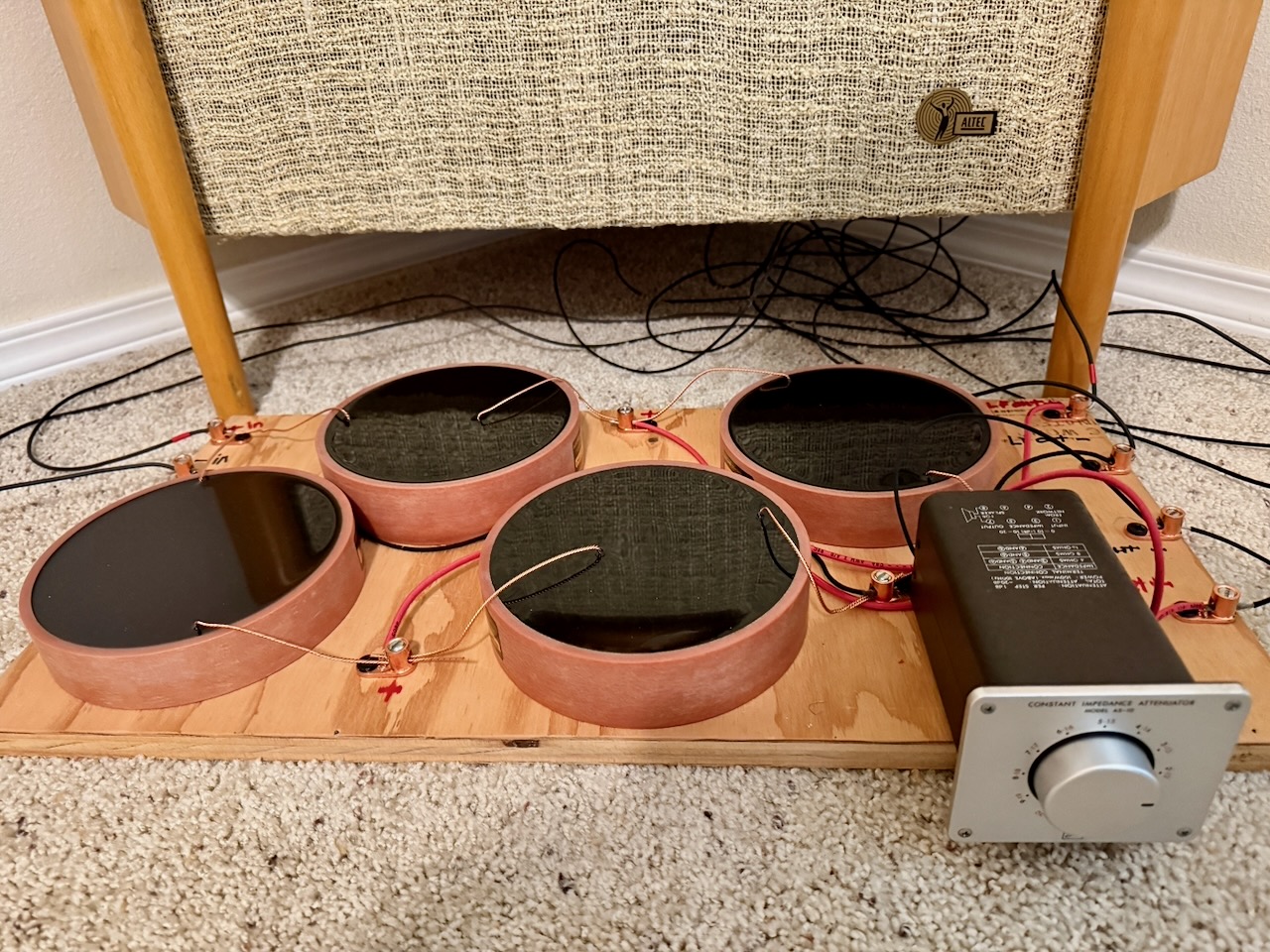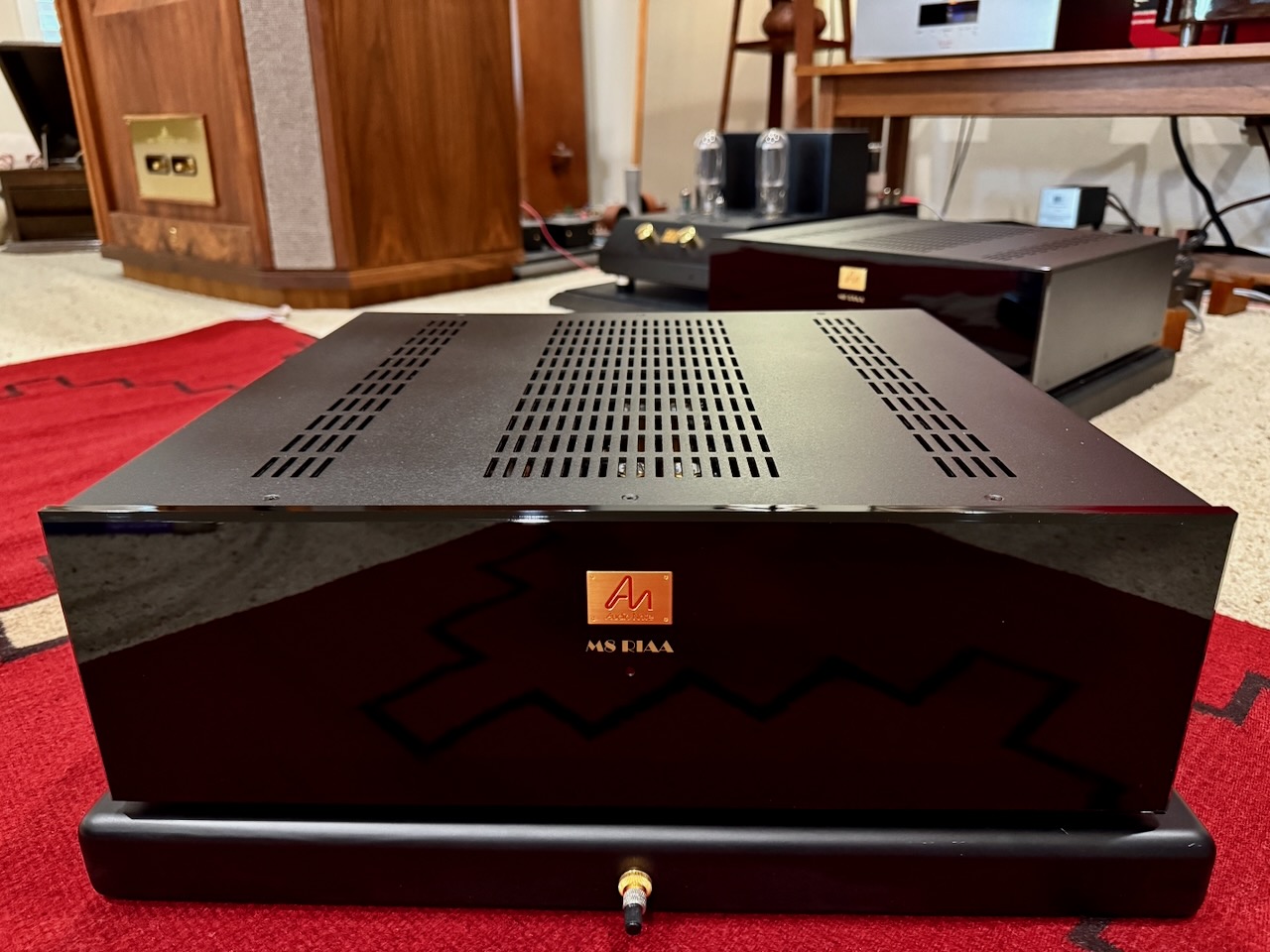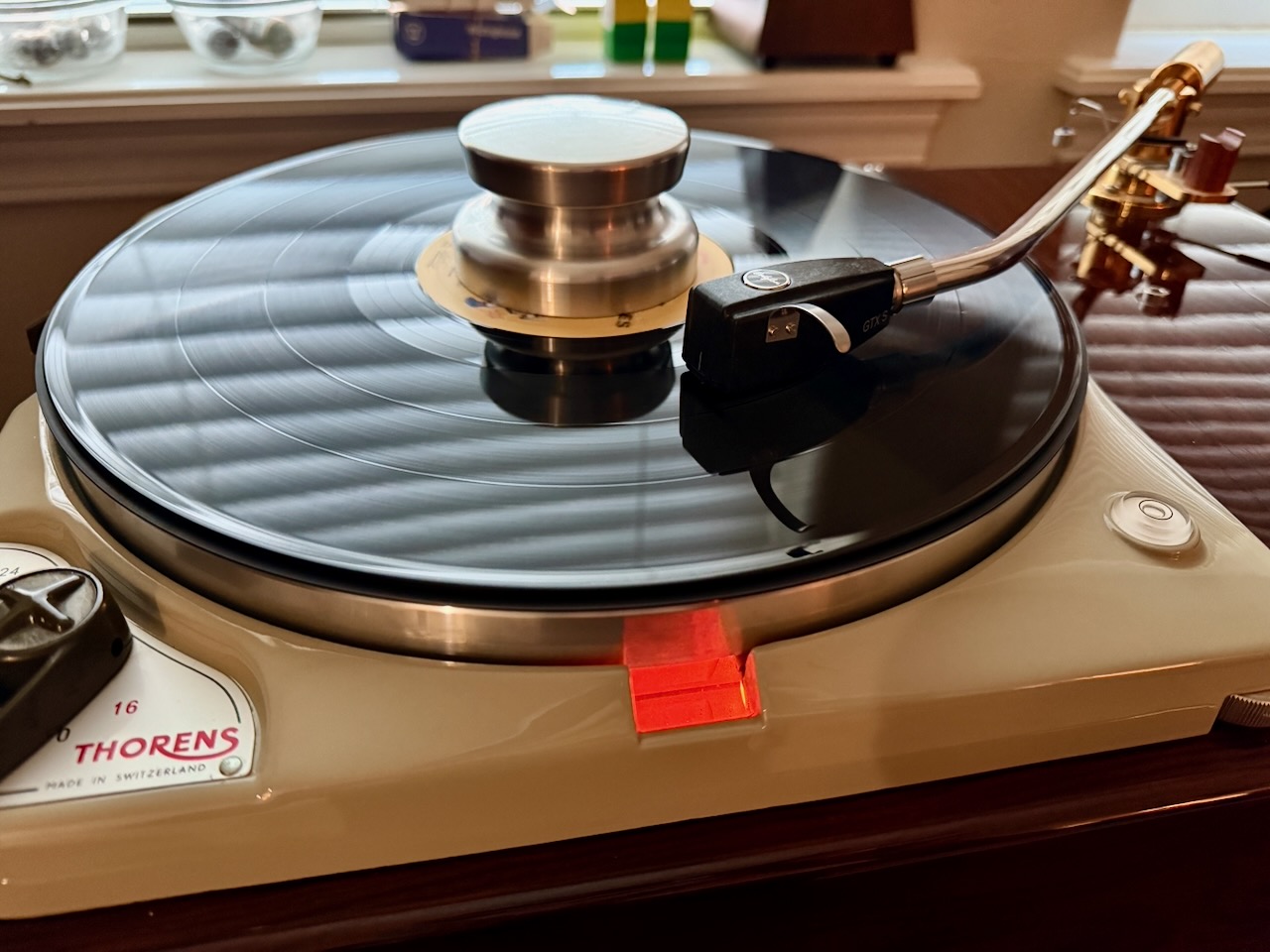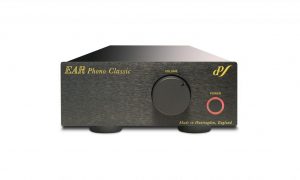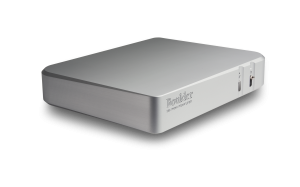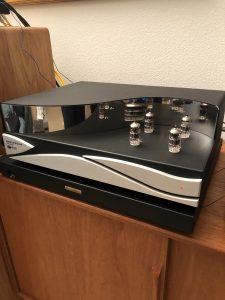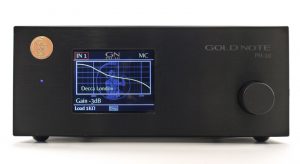Using no NFB is the purest high-performance way to build a phono preamplifier, and avoids the use of performance reducing NFB, as other valve phono stages do.
You can think of the no NFB approach to phono preamplifier design as the purity equivalent of a single-ended-triode amplifier compared to a push-pull amplifier, as more important signal information comes through than would be possible when using NFB in a circuit.
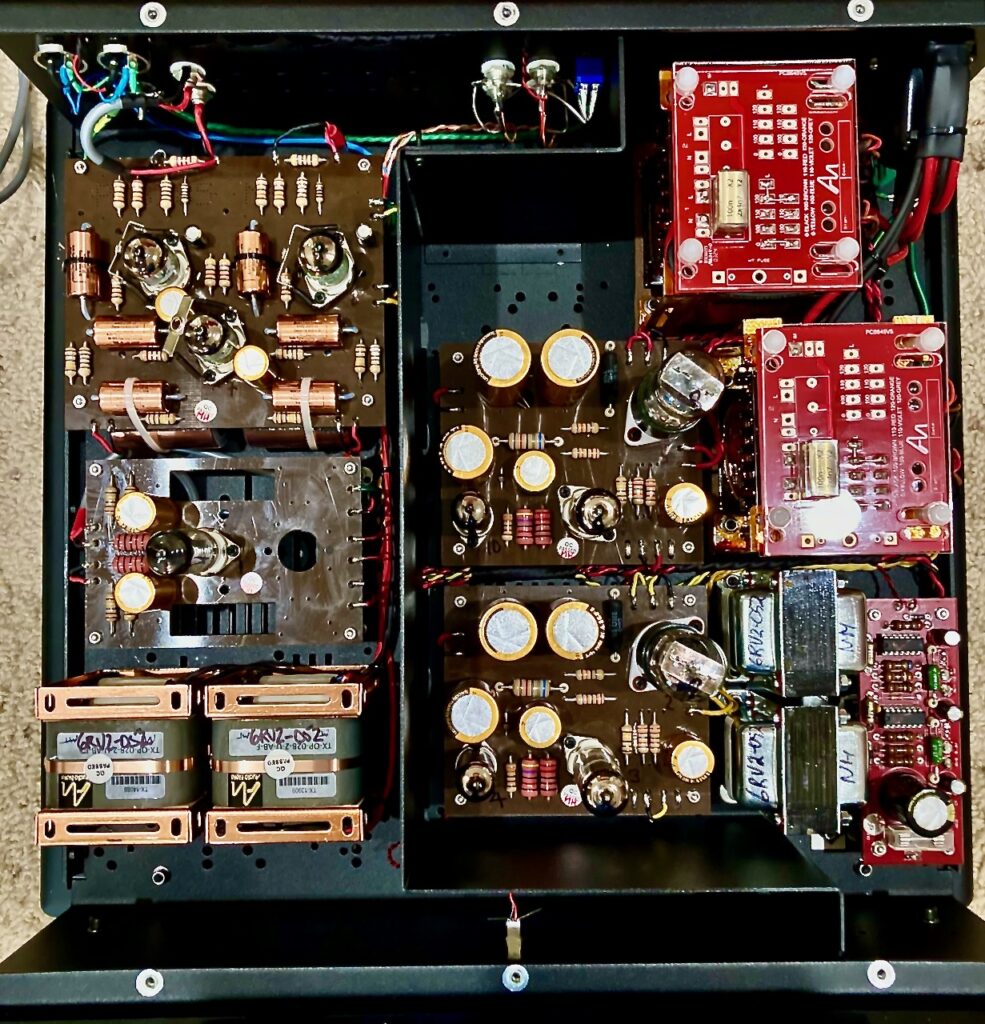
The overall specifications for the M6 RIAA phono preamplifier (top view above) are an input impedance of 47 kΩ, an input sensitivity of 126 mV for 1 V output, an output impedance of <10 Ohms, a weight of approximately 37.5 pounds, and dimensions of 5.5 inches high, by 17.3 inches wide, and 16 inches deep.
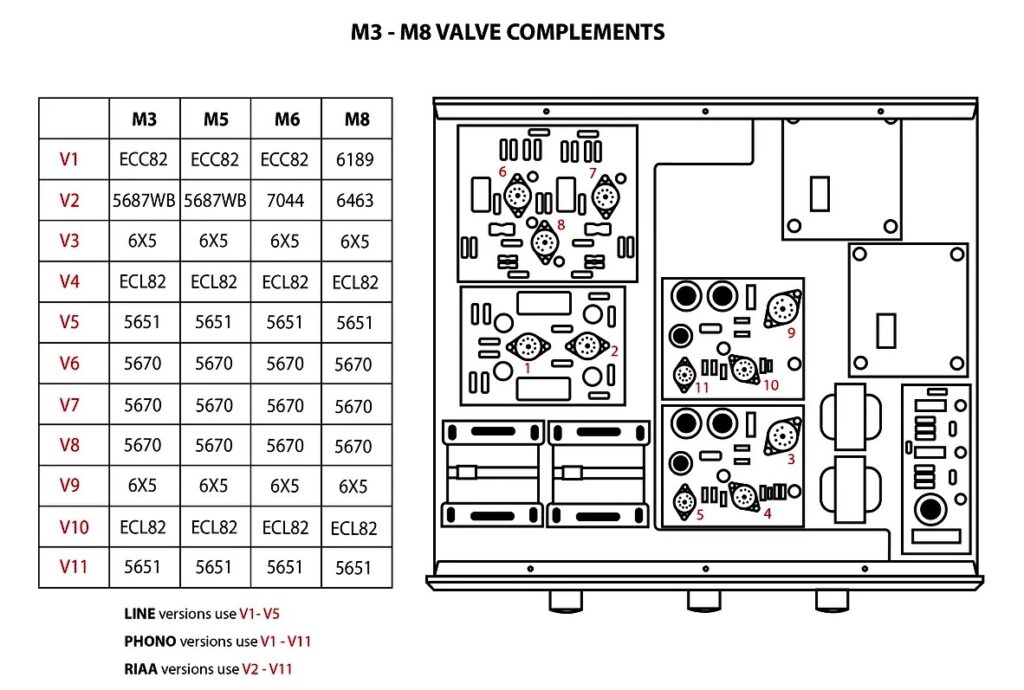
Ten vacuum tubes are used in the M6 and M3 RIAAs' circuits:
On the line stage side of the chassis the M6 uses a single NOS GE 7044 for V2, and the M3 uses a NOS JAN Phillips 5687WB.
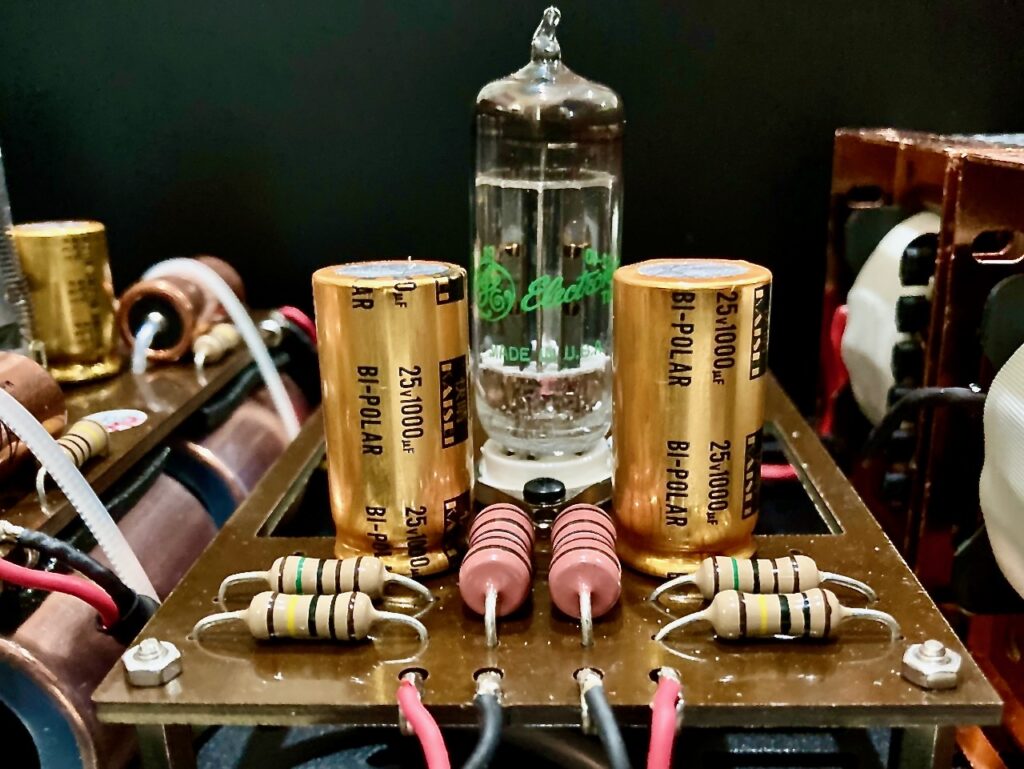
M6 RIAA: NOS GE 7044 for V2 (above).
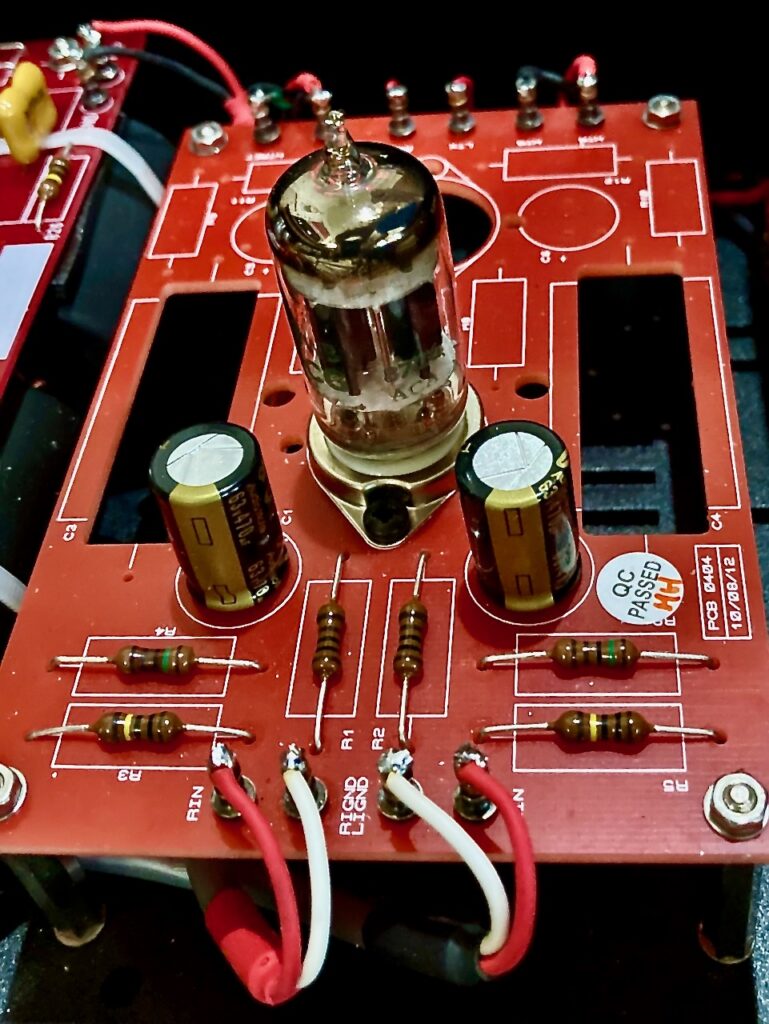
M3 RIAA: NOS JAN Phillips 5687WB for V2 (above)
On the power supplies side of the chassis (photos below):
The M6 uses 2 x NOS Phillips 6X5G in V3 and V9, and the M3 uses 2 x NOS 6U5C Russian tubes.
The M6 uses 2 x NOS RCA ECL82/6BM8 in V4 and V10, and the M3 uses 2x Yugoslavian Ei ECL82 in V4 and V10.
Both the M6 and M3 use 2 x NOS Raytheon JAN 5651WA in V5 and V11.
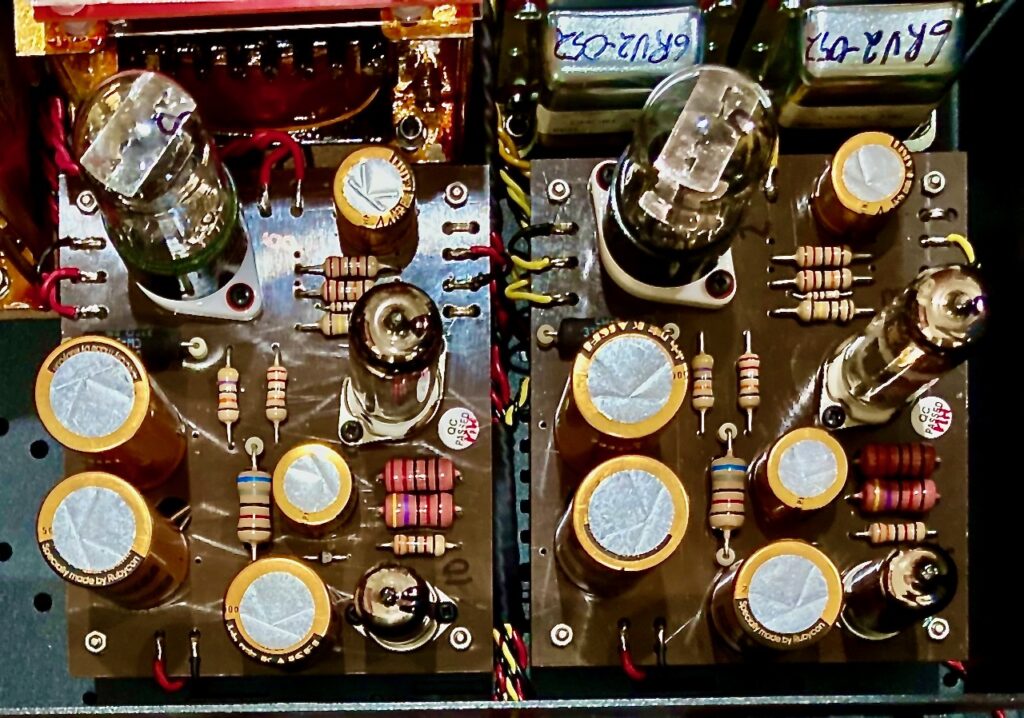
M6 power supplies uses 2 x NOS Phillips 6X5G in V3 and V9; 2 x NOS RCA ECL82/6BM8 in V4 and V10; 2 x Raytheon JAN 5651WA in V5 and V11 (photo above).
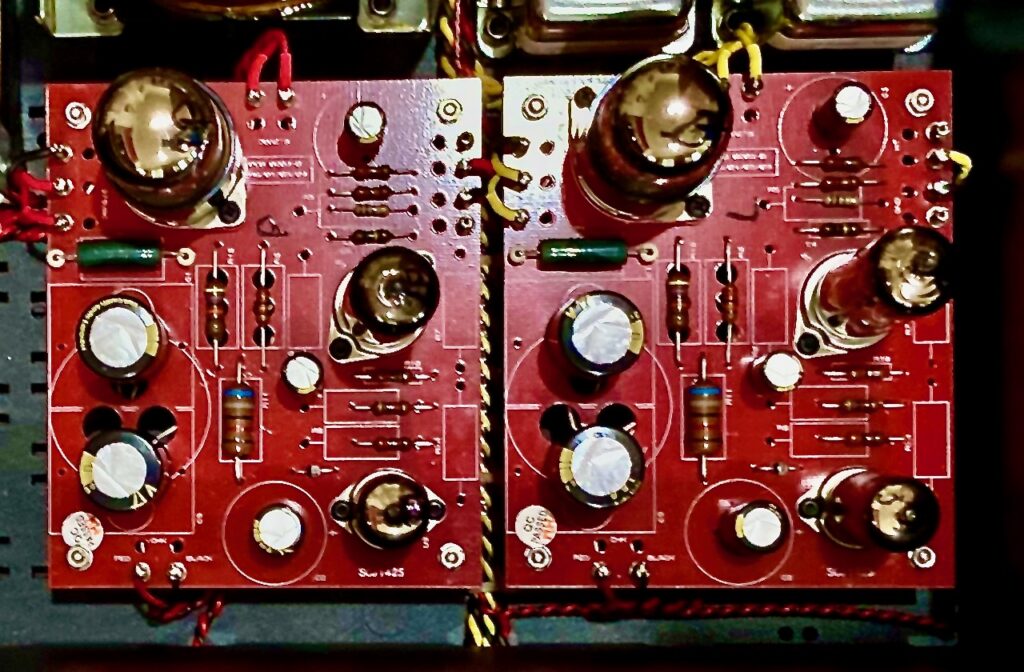
M3 power supplies uses 2 x NOS 6U5C Russian tubes in V3 and V9; 2x Ei ECL82 in V4 and V10; 2 x Raytheon JAN 5651WA in V5 and V11 (photo above).
Line stage side of chassis:
Both M6 and the M3 use 3 x GE JAN 5670W/2C51W in V6-8.
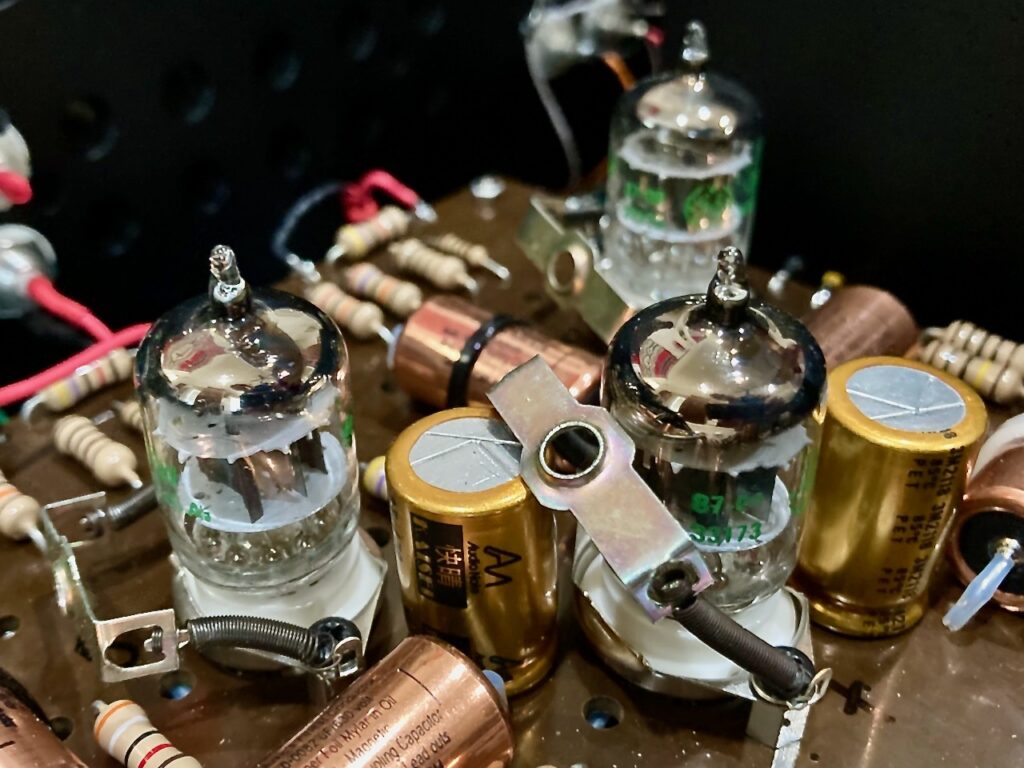
M6: 3 x GE JAN 5670W/2C51W in V6-8 (photo above).
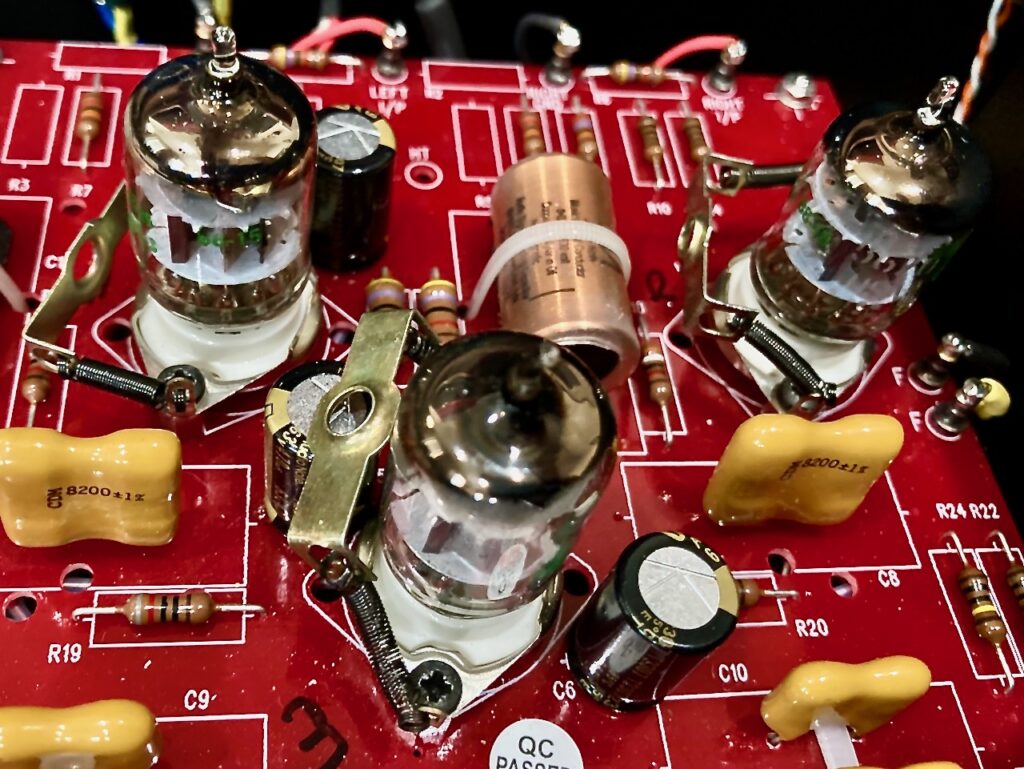
M3: 3 x GE JAN 5670W/2C51W in V6-8 (photo above).
Both the M3 and M6 RIAA feature pure Class A operation, zero negative feedback, single-ended circuit topology, valve rectification, and where the M6 attains its Level Four designation over the M3's Level Three designation, is in the materials and component quality of the circuit topology.
Level Three and Four Differences
As noted above, the M6 RIAA features a 7044 in the line stage, whereas the M3 RIAA features a 5687WB in the line stage.
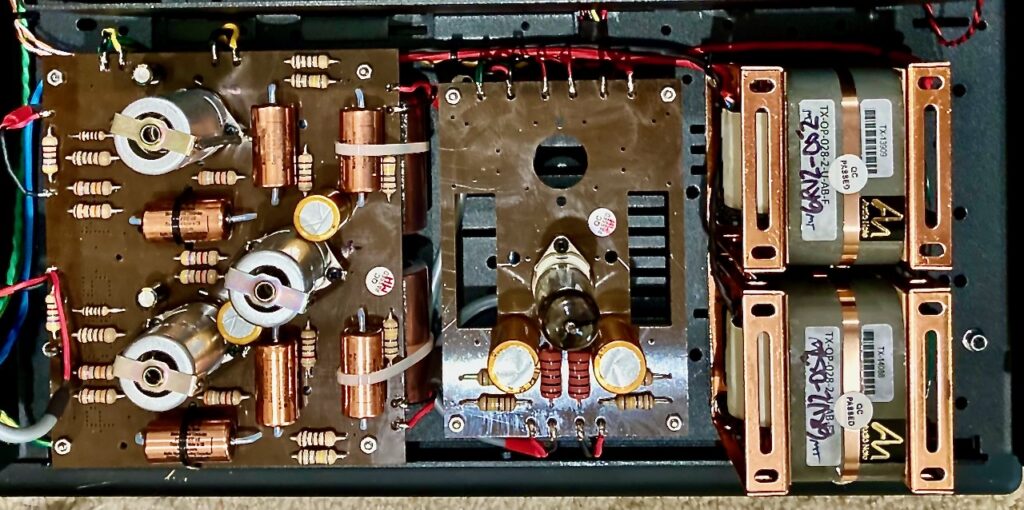
M6 RIAA features a 7044 in the line stage (above).
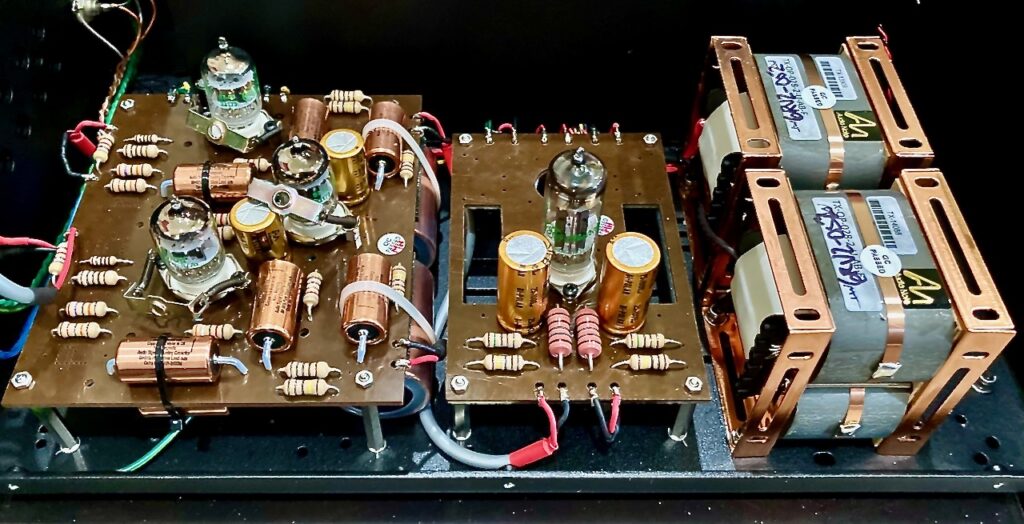
M6 RIAA line stage side view (above).
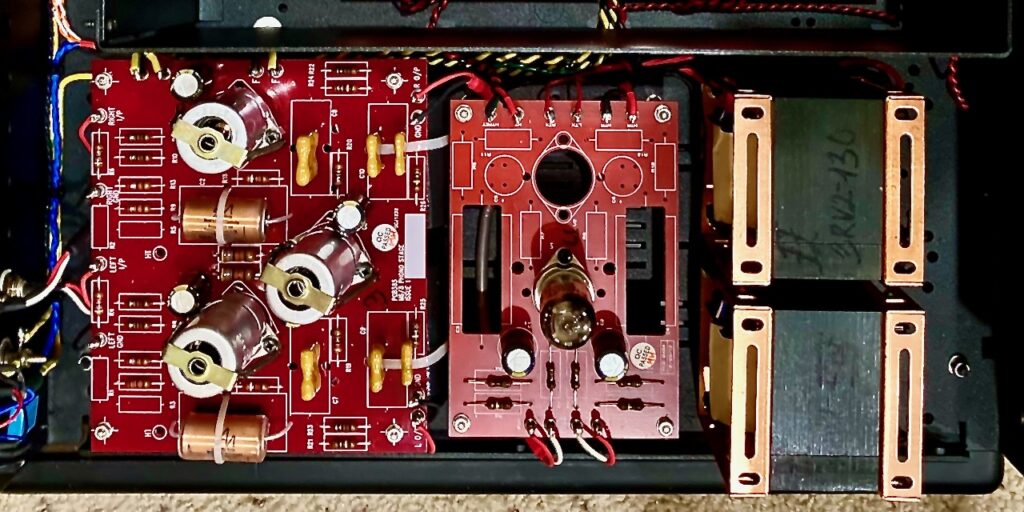
M3 RIAA features a 5687WB in the line stage (above).
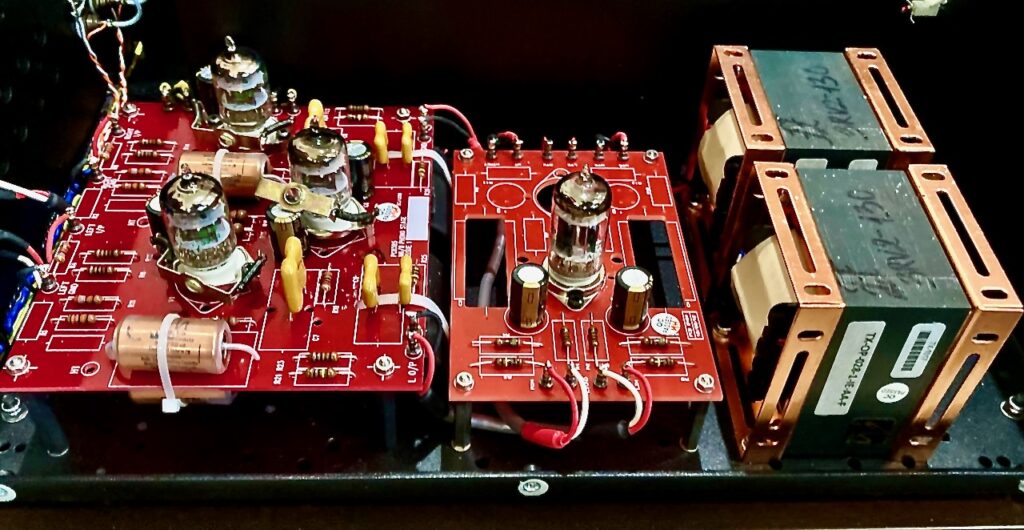
M3 RIAA line stage side view (above).
The M6 utilizes Audio Note (UK) silver wiring (M3 has copper wiring) and tantalum resistors. Audio Note (UK) custom electrolytic capacitors and Audio Note (UK) copper foil signal capacitors are used throughout the M6's circuit.
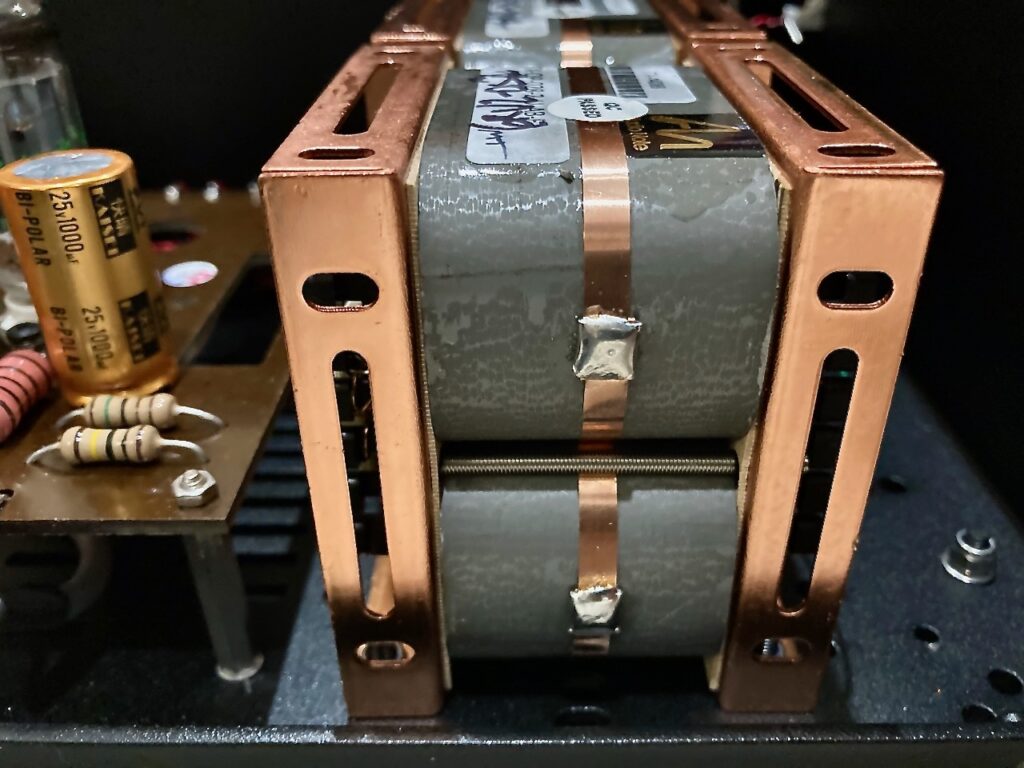
M6 has custom Audio Note (UK) output transformers with a UHiB c-core, copper primary and silver secondary windings (above).
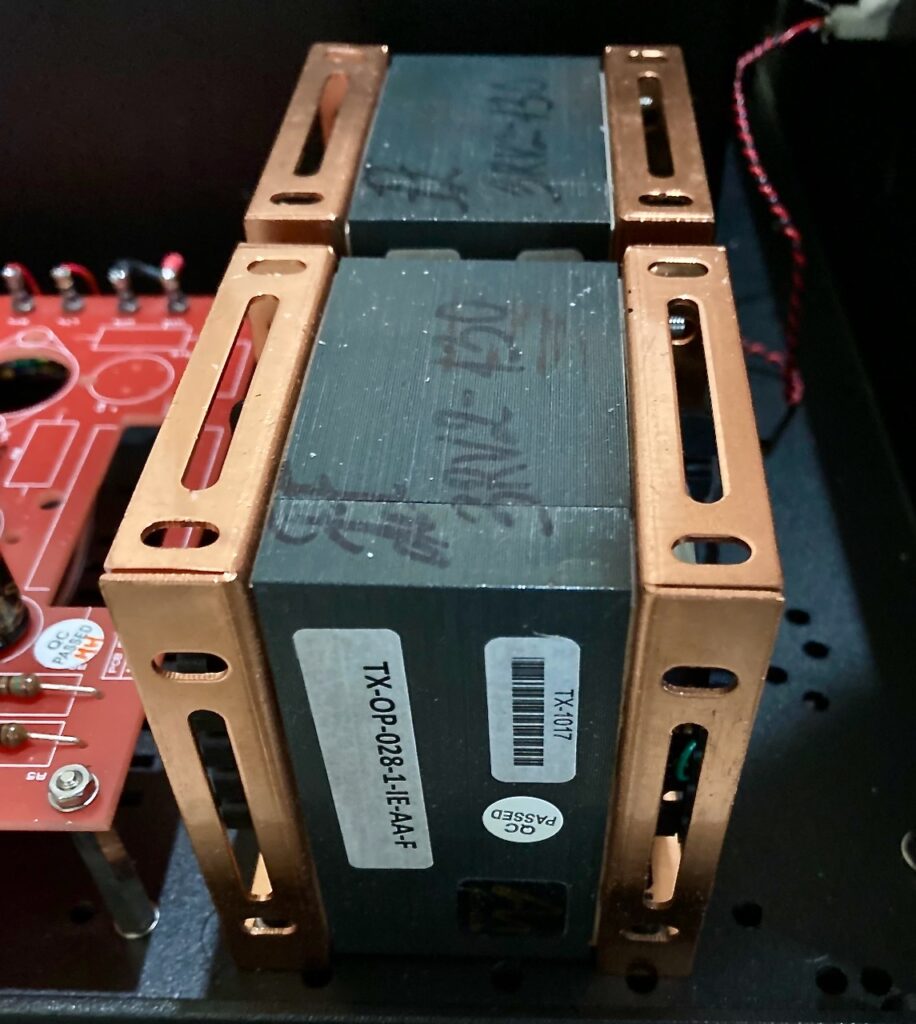
M3 has Audio Note (UK) output transformers with I-E M4 cores and copper windings (above).
In the M6, in-house designed and manufactured, custom Audio Note (UK) output transformers, which feature a UHiB C-core, copper primary and silver secondary windings are featured (whereas the M3 has Audio Note (UK) output transformers with I-E M4 cores and copper windings).
More photos of the power supplies side of the chassis:
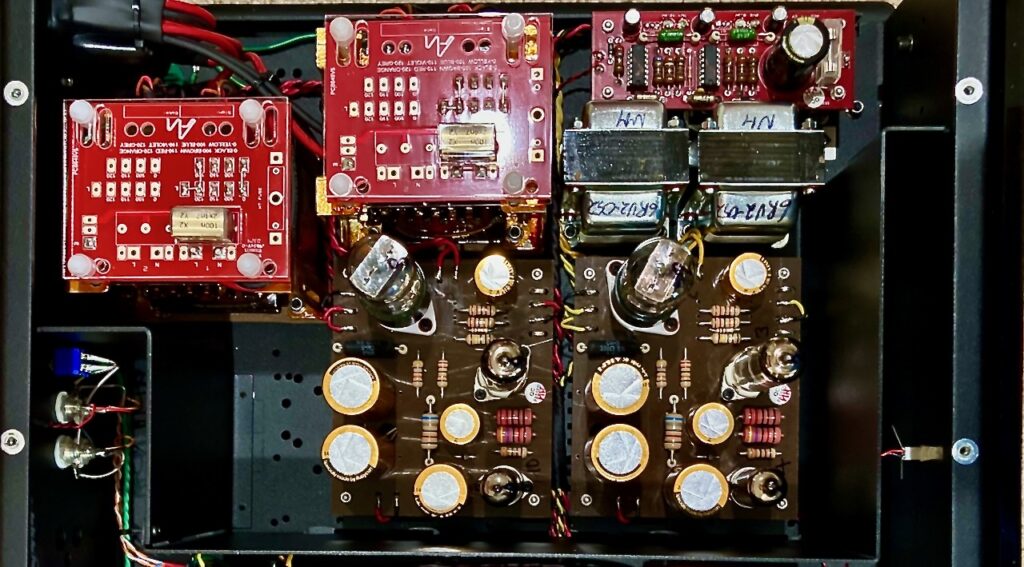
Top view of the M6 power supplies side of chassis (above).
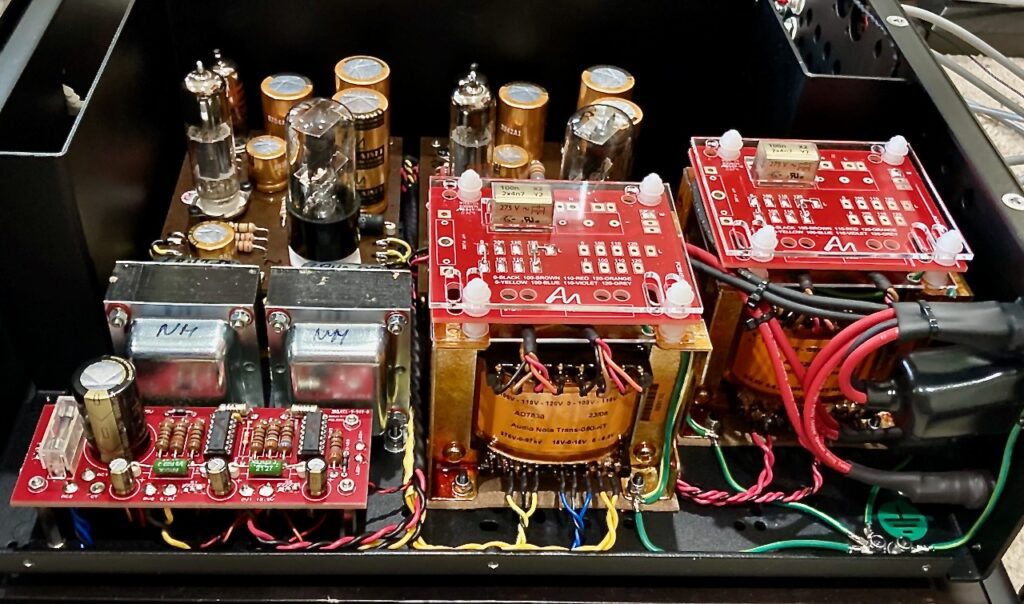
Side view of the M6 power supplies side of chassis (above).
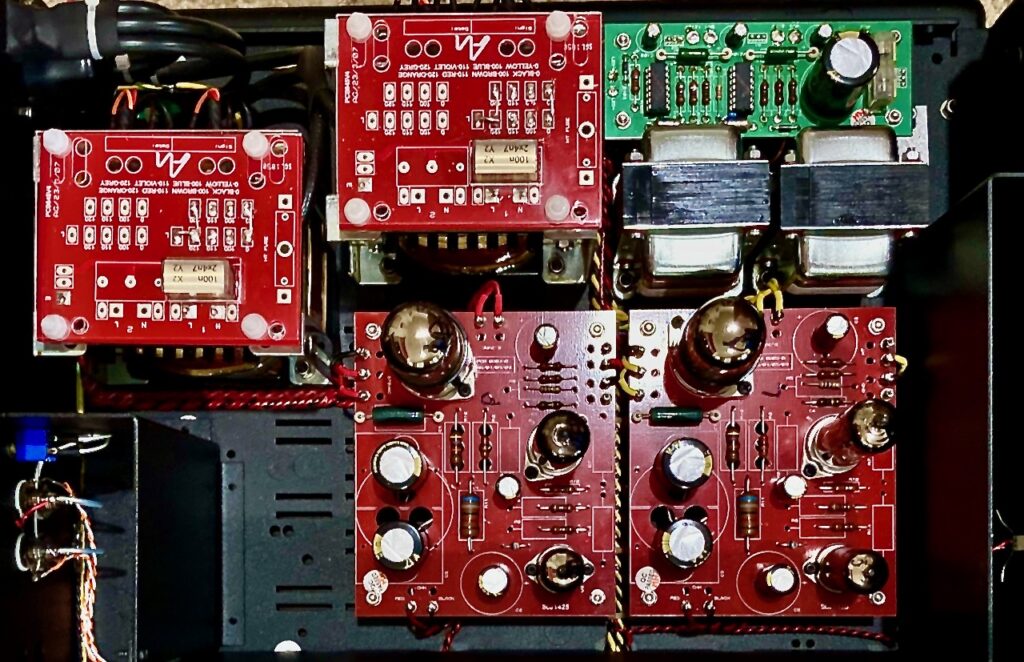
M3 top view of power supply side of chassis (above).
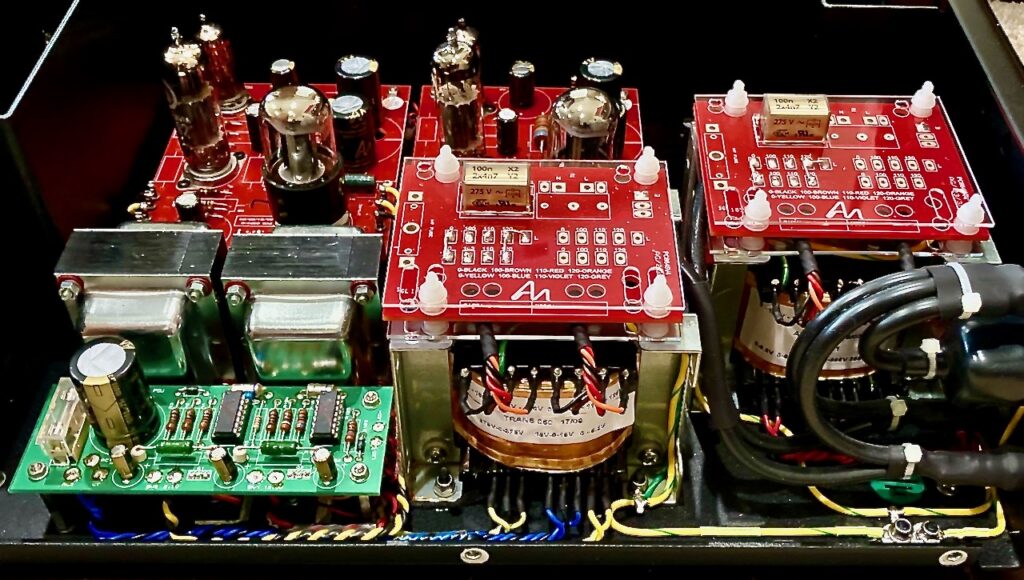
M3 side view of power supply side of chassis (above).
Did you look closely enough at the above photos that you could see the differences in circuit components between the M3 and M6?
For additional information, you can read through the owner's manuals for the M3 RIAA (HERE) and the M6 RIAA (HERE).
I hope you enjoyed the "walkthrough" of the insides of the Audio Note (UK) M6 RIAA and M3 RIAA phono stages, and that it gave you a better feel for the component upgrades that take the Level Three M3 RIAA circuit to the M6 RIAA's Level Four status.
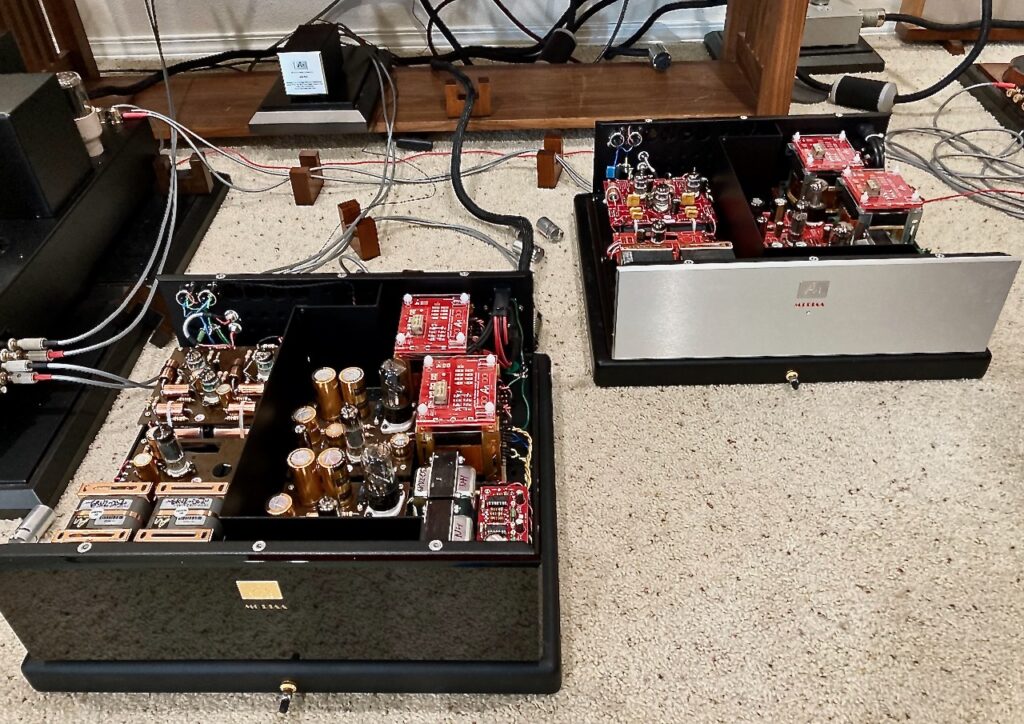
Topless M6 RIAA (left above) and M3 RIAA (right above).
Here's a summary of the differences between the M3 RIAA and M6 RIAA circuitry components:
M3 RIAA
- Vacuum tubes - V2 (NOS JAN Phillips 5687WB); V3 and V9 (2 x NOS 6U5C Russian tubes); V4 and V10 (2x Yugoslavian Ei ECL82).
- Phono stage output capacitors - copper foil.
- Phono stage circuit wiring - copper wire.
- Main power supply electrolytics - Cerafine and standard electrolytics.
- Power supply junction electrolytics - Cerafine and standard Black Gates.
- Signal capacitors - copper foil.
- Output transformer - Copper wired, M4 IE-core.
M6 RIAA
- Vacuum tubes - V2 (NOS GE 7044); V3 and V9 (2 x NOS Phillips 6X5G); V4 and V10 (2 x NOS RCA ECL82/6BM8).
- Phono stage output capacitors - silver foil.
- Phono stage circuit wiring - silver wire.
- Main power supply electrolytics - Cerafine.
- Power supply junction electrolytics - FK and standard Black Gates.
- Signal capacitors - copper foil in phono stage, silver foil interstage signal caps on output of phono second stage.
- Output transformer - Copper wired primary, silver secondary, high nickel content C-core.
Please click on the link below to go to the next page.




